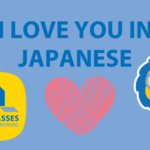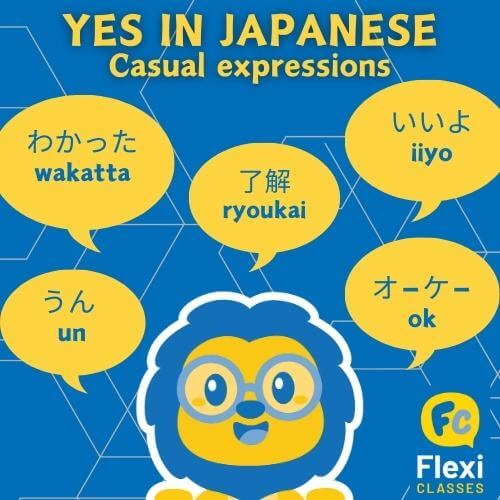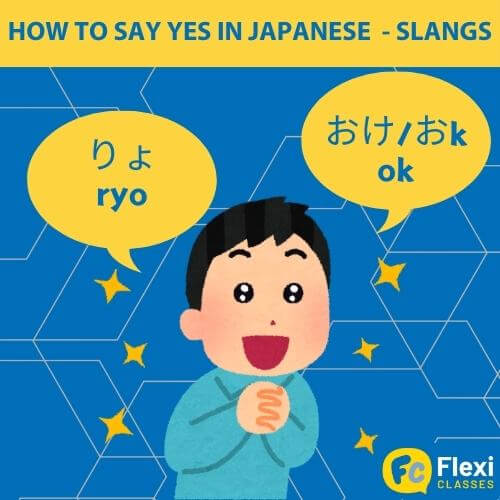In the Country of Harmony: How to Say Yes in Japanese
Understanding the Variations of Yes in Japanese || Need-to-Know Vocab, Phrases and Culture
Japan is a country that values harmony, and there is a great psychological cost to saying no or rejecting something.

Of course, whilst saying yes in Japanese is much easier than saying no, it is still very important to learn the appropriate expressions for the situation and the person.
💼 For example, if you are talking to the boss and you express your agreement in a friendly manner, it will also be seen as an attempt to disrupt the harmony of the situation.
On the other hand, responding to a friend in a formal manner can give the impression of awkwardness.
But don’t worry, we’re here to help!
👉 In this article, you will learn about such ambiguous expressions, as well as what to say when you want someone to clearly express their intentions.
Yes in Japanese || Cultural Context
Yes in Japanese || Formal Expressions
Yes in Japanese || Casual Expressions
Yes in Japanese || Slangs
Yes in Japanese || FAQs:
Yes in Japanese || Cultural Context
When learning the Japanese language, you also have to learn a lot about Japanese culture.
In actual conversation, it is a characteristic of Japanese people that they rarely express their intentions clearly, even if they consent.
This is a source of concern for many foreigners.
Not clearly stating one’s position of approval or disapproval and leaving it ambiguous is something Japanese people like to do, and it is a source of puzzlement for those who were born and raised in English-speaking cultures, where people clearly state their intentions.
Especially in business situations, Japanese people are notorious for not expressing their intentions clearly. The Japanese value “空気 くうき kuuki/air, atmosphere” and avoid confrontation, but for foreigners, this is a particular problem, especially in business transactions.
In such situations, it is effective to present a framework from your side and guide the other party in a way that makes it easier for them to answer. If you learn how to do this, you will find it easier to negotiate with Japanese people.
And on that note, let’s dive in!

Express Your Love 💖 How to Say I Love You in Japanese
Today we open our hearts and teach you how to express you love in Japanese – welcome to our guide on how to say I love you in Japanese.
Yes in Japanese || Formal Expressions
Learn formal expressions first. By learning formal expressions, it will be easier to understand more casual expressions and slang.
|
はい
hai | Yes |
|
ええ
ee | Yes |
|
そうですね
soudesune | Well… / Yes. / That’s so. / You’re right. |
|
なるほど
naruhodo | I see. / That makes sense. / I’m listening. |
はい hai literally means “yes,” and is the most standard Japanese affirmative. In conversation, however, it is common to use ええ ee more often than “はい hai,” and “はい hai” is usually used to punctuate the other person’s speech.
When you want to encourage the other person to speak, you say, “そうですね soudesune.”
In Japanese conversation, そうですね soudesune is often used as a response when neither agreeing nor disagreeing with the other. It is also used as an interjection.
For example:
どちらがいいですか?
Which would you prefer?そうですね、ちょっと待ってください
Well, just a momentCombined, it can be used to softly express agreement, like “ええ、そうですね ee, soudesune / Well, you’re right.”

なるほど naruhodo is another useful expression to react to the speaker. When you say this, you can show that you understand, but not necessarily agree with it.
Even if the speaker says something you can’t agree with, when you say “なるほど naruhodo,” you can show your respect to his/her opinion.
If you want to offer a counterargument, you could say “なるほど、しかし… naruhodo, shikashi… / I see your point, but…” If you want to agree, you can say “なるほど、そうですね naruhodo, soudesune. / I understand. You’re right.”
|
わかりました
wakarimashita | I understand |
|
了解しました
(了解 = りょうかい) ryoukai shimashita | I understand |
|
承知しました
(承知 = しょうち) shouchi shimashita | I understand |
|
かしこまりました
kashikomari mashita | I understand |
All of these expressions can be translated into “I understand,” but nuances are different.
わかりました wakarimashita can be used in a formal situation, but gives a little bit casual impression.
了解しました (了解 = りょうかい) ryoukai shimashita is also frequently used, but some think that this should not be said to your superior.
All-purpose expressions are 承知しました (承知 = しょうち) shouchi shimashita and かしこまりました kashikomarimashita. These expressions can be used at any time, giving a very polite and neat impression. Especially when your superior says something to you, you are supposed to respond using these phrases.
Of course, you can combine those expressions: はい、承知しました (承知 = しょうち)。 hai, shouchi shimashita.ええ、かしこまりました。 ee, kashikomarimashita.なるほど、わかりました。 naruhodo, wakarimashita.
Next, let’s touch on expressions that encourage the other party to make a decision.
By presenting the framework of the discussion from your side, you are able to move the discussion in your favor, and it is easier to get the desired result from the other party.
いつまでに決定していただけますか? (決定 = けってい)
itsumade ni kettei shite itadake masuka?When can you make a decision by?
どなたが決定の権限を持っていますか? (決定 = けってい ; 権限 = けんげん ; 持 = も)
donata ga kettei no kengen wo motte imasuka?
Who has the authority to make decisions?
決定を下すにあたって更に必要な情報はなんですか ? (決定 = けってい ; 下 = くだ ; 更 =さら; 必要 = ひつよう; 情報 =じょうほう)
kettei wo kudasu ni atatte sarani hitsuyou na jouhou ha nandesuka?
What further information do you need to make a decision?
These expressions are useful when negotiating with Japanese. Even Japanese who are reluctant to speak clearly will often talk if we prompt them to answer. This is true even in conversations between Japanese people.
Matthew Galbraith Perry, who urged Japan to open diplomatic relations with the U.S., learned from Russia, which had negotiated softly and failed, and approached negotiations with Japan in a coercive manner
💡 A good practice is to be thoroughly ambiguous when you want to immerse yourself in Japanese culture and thoroughly articulate when negotiating with Japanese.

The 100 Most Common Japanese Words // Official List
The official list of the most common Japanese words include 20,000 words in total. Here we offer you an insight in the TOP 100 to get you started!
Yes in Japanese || Casual Expressions
Next, we will discuss casual expressions. These expressions may be used in conversation with close friends.
When you agree with the other party, you can express it very comfortably in Japanese.
|
うん
un | Yes / yeah |
|
わかった
wakatta | I got it |
|
了解
/りょうかい ryoukai | I got it |
|
オーケー
OK | Okay |
|
いいよ
iiyo | Good |
うん un is a casual way of saying “はい hai.” This is pronounced almost like “ん n” in a conversation.
わかった wakatta is a casual form of “わかりました wakarimashita.”
了解 [りょうかい ryoukai and オーケー OK is also a very popular response among friends.
You can say いいよ iiyo when someone’s proposal is good for you.

For example:
コーヒーでも飲まない?
kohi demo nomanai? (飲 = の)いいよ
iiyo明日出かけない?
ashita dekakenai? (明日出 = あしたで)いいよ
iiyoOf course you can combine these phrases. うん、いいよ。 un,iiyo / Yes, that’s alright.オーケー、わかった。oke, wakatta. / OK, I got it.
BONUS || Learn how to say Yes in Korean and Yes in Spanish
Yes in Japanese || Slang
Now, let’s take a look at a few slang words.
👉 These are used almost exclusively on online chats and the Japanese don’t say these in conversations.
|
りょ
ryo |
|
おけ
[おk] ok |
As you can see, りょ ryo is an abbreviated form of 了解 りょうかい ryoukai.” Sometimes words can be shortened to this extent, just like:
Please ➡️ plz.
おけ ok may be also easy to understand. おk is also a frequently seen form. In anime, occasionally characters say those words verbally, but this is just for anime, and you’re not supposed to use it in real life.

That is all for this article! What are your thoughts on navigating ‘Yes’ in Japanese? Let us know in the comments section!
Yes in Japanese || FAQs:
What is the Japanese word for yes?
The most common word for yes in Japanese is “はい hai.”
Can ‘ええ ee’ be used in formal situations?
[“ええ Ee” is more polite than “うん un” but less formal than “はい hai.” It’s often used in less formal polite conversations.
How do you write ‘yes’ in kanji?
There is no kanji specifically for ‘yes.’ Instead, you use the hiragana “はい hai.”
How do I respond ‘yes’ to a question in Japanese?
Simply say “はい hai” or nod while saying “はい hai” to indicate affirmation.
Is it rude to say ‘yes’ loudly in Japan?
Loudness can be seen as impolite in many contexts, so it’s better to use a normal or softer tone.
How can I practice saying ‘yes’ in Japanese effectively?
Practice by listening to native speakers, using apps, or speaking with Japanese friends to get comfortable with different contexts and tones.
Want More From LTL?
WANT TO LEARN JAPANESE? Check out our online Japanese courses here.
We offer a 7-day free trial to all new students where you can study 24/7.
What about studying Japanese in Japan instead? We’ve got your back. Our Japanese courses in Tokyo can either be taken in small groups of no more than 5 students or individually for a more tailored experience.
We even offer incredible homestay experiences in Tokyo as well.
Come and be a part of this amazing community.









